In the dynamic world of consumer goods, packaging is far more than just a container111; it's a critical component of brand identity, product preservation, and consumer convenience. Among the myriad of packaging solutions, the 8 Side Seal Bag, also known as a flat-bottom pouch or block-bottom bag, has emerged as a revolutionary design, offering unparalleled benefits in aesthetics, functionality, and sustainability. This comprehensive guide delves into the intricate details of this innovative packaging format, highlighting its design superiority, manufacturing precision, and versatile applications, all while adhering to the highest standards of industry expertise and trustworthiness.
The Evolving Landscape of Composite Packaging: Trends and Innovations
The global packaging market is experiencing significant shifts, driven by consumer demand for convenience, sustainability, and enhanced product shelf life. Flexible packaging, including solutions like the 8 Side Seal Bag, is leading this charge. According to a recent report by Grand View Research, the global flexible packaging market size was valued at USD 248.67 billion in 2022 and is projected to grow at a compound annual growth rate (CAGR) of 4.5% from 2023 to 2030. This growth is largely attributable to its lightweight nature, reduced material consumption, and superior barrier properties compared to rigid alternatives.
The trend towards premiumization and differentiation on retail shelves has spurred innovation in pouch design. Consumers are drawn to packaging that not only protects the product but also offers a premium feel and ease of use. This is where the 8 Side Seal Bag excels, providing a stable, visually appealing format that maximizes branding opportunities. Furthermore, the focus on sustainable packaging solutions is driving the development of recyclable and compostable composite packaging examples, pushing manufacturers to explore mono-material structures or bio-based alternatives without compromising performance.
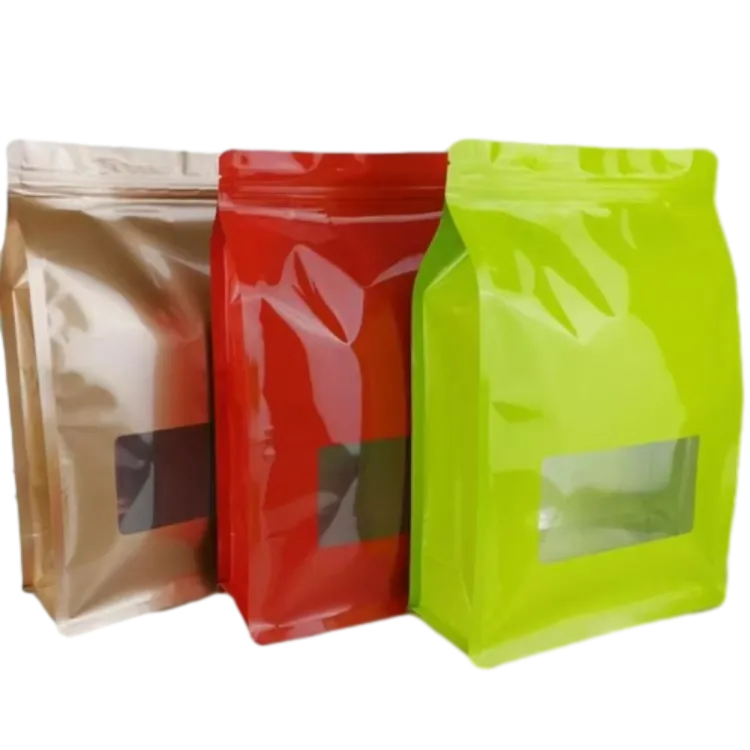
The integration of smart packaging features, such as QR codes for traceability or NFC tags for consumer engagement, is also becoming more prevalent. These advancements signify a move towards packaging that is not just a container111 but an interactive medium, enhancing the overall consumer experience and brand loyalty. Understanding these macro trends is crucial for businesses aiming to stay competitive and choose the most effective packaging solutions for their products.
Introducing the 8 Side Seal Bag: Design and Technical Excellence
The 8 Side Seal Bag (Product URL: https://www.junlanpack.com/eight-fold-sealed-packaging-bag.html) is a sophisticated packaging solution characterized by its flat, stable bottom and eight sealed edges, providing an upright stance that maximizes shelf presence. This unique structure allows for increased fill volume compared to traditional stand-up pouches, and offers five distinct printable panels (front, back, bottom, and two side gussets), making it a marketer's dream for branding and product information dissemination.
Key Technical Parameters and Material Science
The performance of an 8 Side Seal Bag hinges on its material composition and structural integrity. Modern flexible packaging relies on multi-layer composite packaging structures, engineered to provide specific barrier properties against oxygen, moisture, UV light, and aroma transfer. Typical materials include:
- Outer Layer (Print Layer): Often PET (Polyethylene Terephthalate), BOPP (Biaxially Oriented Polypropylene), or Paper. These materials offer excellent printability, stiffness, and sometimes a protective surface.
- Barrier Layer: This is crucial for product preservation. Common barrier materials include EVOH (Ethylene Vinyl Alcohol), Al (Aluminum Foil), or metallized films (e.g., MET PET, MET BOPP). EVOH provides exceptional oxygen barrier, vital for fresh food, while aluminum foil offers the highest barrier against light, oxygen, and moisture, extending shelf life significantly.
- Middle Layer (Structural Support): Typically Nylon (Polyamide) or PET, providing strength, puncture resistance, and improved retort capability for heat-processed foods.
- Inner Layer (Sealant Layer): Usually LLDPE (Linear Low-Density Polyethylene) or CPP (Cast Polypropylene). This layer is heat-sealable, allowing the pouch to be sealed effectively and providing product contact compliance.
The precise combination and thickness of these layers determine the bag's performance characteristics. For instance, a coffee bag would require a high-barrier structure (e.g., PET/AL/LLDPE) to lock in aroma and prevent oxidation, while a snack bag might use a metallized film for moisture and oxygen protection with a clear window for product visibility.
Typical 8 Side Seal Bag Specifications and Parameters
| Parameter |
Typical Range/Description |
Importance & Industry Relevance |
| Material Structure |
PET/VMPET/PE, BOPP/AL/PE, Paper/AL/PE, PA/PE, PP/PP, etc. |
Dictates barrier properties, strength, and recyclability. Customized based on product requirements (food, pet food, liquid). |
| Thickness (Microns) |
80 - 200 microns (Total) |
Affects puncture resistance, stiffness, and cost. Optimized for product weight and fragility. |
| Oxygen Transmission Rate (OTR) |
0.1 - 10 cm³/m²/day @ 23°C, 0% RH (for high barrier) |
Critical for preventing oxidation in oxygen-sensitive products like coffee, nuts, or meat snacks. Lower is better. ASTM D3985 standard. |
| Water Vapor Transmission Rate (WVTR) |
0.1 - 5 g/m²/day @ 38°C, 90% RH (for high barrier) |
Essential for preventing moisture ingress or egress, maintaining product freshness, crispness, or preventing clumping. Lower is better. ASTM F1249 standard. |
| Dimensions (Width x Height + Gusset) |
Variable, e.g., 150x250+80mm (for 500g coffee) |
Tailored to product volume, weight, and shelf dimensions. Gusset size directly impacts bottom stability. |
| Closure Options |
Zipper (press-to-close, slider), tear notch, spout, degassing valve |
Enhances consumer convenience, reusability, and product freshness after opening. Degassing valves for coffee. |
| Print Technology |
Gravure Printing, Flexographic Printing, Digital Printing |
Enables high-resolution graphics and vibrant colors, essential for brand appeal. Gravure offers superior consistency. |
| Puncture Resistance |
ASTM F1306 (various methods) |
Measures resistance to piercing by sharp objects, crucial for products with sharp edges or for robust handling. |
| Seal Strength |
ASTM F88 |
Ensures integrity of seams, preventing leaks or contamination. Critical for product safety and shelf life. |
Understanding these parameters is vital for product developers and procurement managers to specify the correct 8 Side Seal Bag for their unique product requirements, ensuring optimal protection, extended shelf life, and brand representation.
The Art of Precision: 8 Side Seal Bag Manufacturing Process
The production of an 8 Side Seal Bag is a highly sophisticated process, blending advanced material science with precision engineering. Unlike rigid container111s that might involve casting or molding, flexible packaging manufacturing focuses on laminating and forming specialized films. Here’s a detailed look at the typical manufacturing workflow:
1. Design & Pre-Press
Conceptualization of bag dimensions, graphics, and features. Digital artwork is prepared, and printing plates (gravure cylinders or flexo plates) are made, ensuring color accuracy and registration. This stage sets the foundation for visual appeal and functional integrity.
2. Material Selection & Preparation
Based on product needs (e.g., barrier, strength, sustainability), specific film layers (PET, Nylon, Aluminum, PE) are chosen. Large rolls of these raw films are prepared for the next stages.
3. Printing
High-speed printing presses (typically gravure or flexographic) transfer the design onto the outer film layer. Gravure printing offers exceptional print quality and consistency, ideal for complex graphics, while flexography is versatile and cost-effective for large runs. Quality control checks for color accuracy, registration, and defects are paramount.
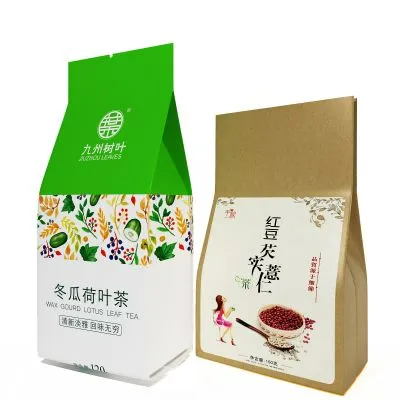
4. Lamination
Multiple printed and unprinted film layers are bonded together using advanced adhesive systems (solvent-based, solvent-less, or extrusion lamination). This step creates the multi-layer composite packaging structure, imparting crucial barrier properties and mechanical strength. Curing time is essential for optimal bond strength.
5. Slitting
The wide laminated rolls are then precisely slit into narrower rolls, matching the desired width for the pouch-making machine. Precision slitting ensures consistent bag dimensions and minimizes waste.
6. Pouch Forming (Bag Making)
This is the core of the 8 Side Seal Bag production. Specialized bag-making machines take the slit rolls, form the pouch shape, and create the characteristic eight sealed sides (four corner seals and two bottom gusset seals). Features like zippers, spouts, or degassing valves are integrated during this process. Precise heat sealing parameters (temperature, pressure, dwell time) are critical for robust seal integrity.
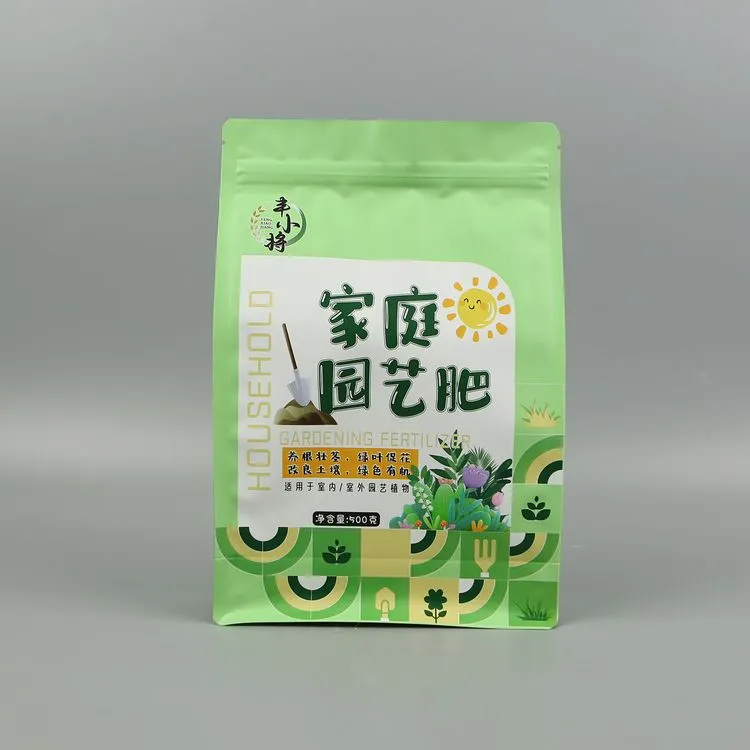
7. Quality Control & Inspection
Throughout the process, stringent quality checks are performed. This includes visual inspection for print defects, material flaws, and seal integrity. Laboratory tests, such as seal strength (ASTM F88), burst testing (ASTM F1140), OTR (ASTM D3985), and WVTR (ASTM F1249), are regularly conducted to ensure bags meet specified performance standards and regulatory requirements (e.g., FDA for food contact materials).
8. Packaging & Dispatch
Finished 8 Side Seal Bags are counted, stacked, and carefully packaged for shipping to clients, ready for filling at their facilities. Careful handling ensures bags maintain their structural integrity.
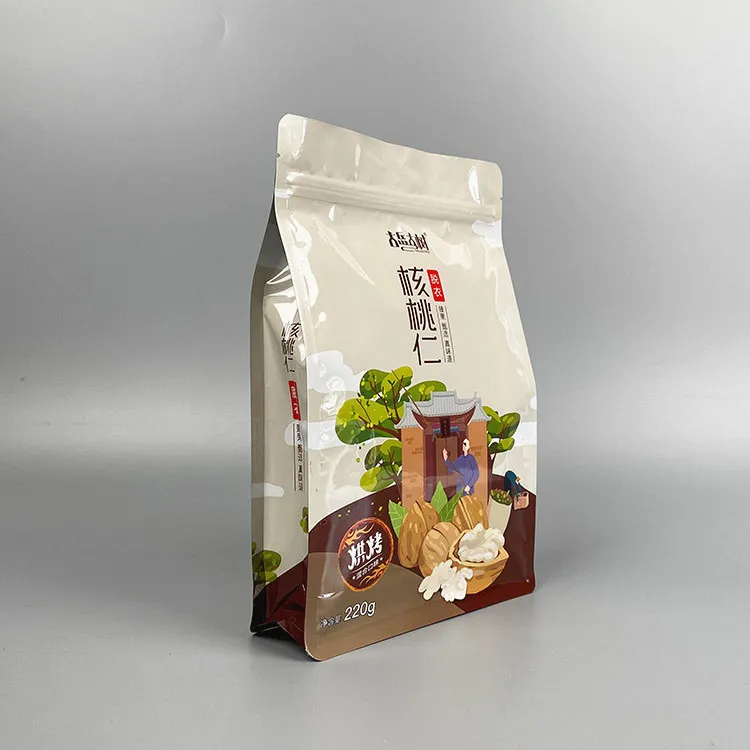
The manufacturing process emphasizes precision, hygiene, and adherence to international standards like ISO 9001 for quality management and relevant food safety certifications (e.g., BRCGS, FSSC 22000) for food-grade packaging. The typical service life of an 8 Side Seal Bag depends on the product it contains and storage conditions, but the robust seals and barrier properties are designed to maintain product integrity throughout its intended shelf life, often ranging from 6 months to 2 years for many food and beverage products.
Technical Advantages of the 8 Side Seal Bag: Beyond Basic Packaging
The 8 Side Seal Bag offers a multitude of technical and functional advantages that elevate it above conventional pouch designs:
- Superior Shelf Stability: The flat bottom and reinforced side seals provide exceptional stability, allowing the pouch to stand perfectly upright on shelves. This enhances product visibility and makes for a more organized retail display.
- Maximized Branding Area: With five printable panels (front, back, bottom, and two side gussets), the 8 Side Seal Bag offers an expansive canvas for brand messaging, high-resolution graphics, and essential product information, creating a premium look that attracts consumers.
- Enhanced Product Protection: Multi-layer composite packaging materials, carefully engineered with barrier layers (e.g., aluminum foil, EVOH), provide excellent protection against oxygen, moisture, light, and aroma loss, significantly extending product shelf life and maintaining freshness. This is a primary advantage over less sophisticated packaging.
- Increased Fill Volume: The block-bottom design allows for a greater fill volume compared to similarly sized stand-up pouches, optimizing packaging efficiency and potentially reducing material usage per unit of product.
- Consumer Convenience: Features like reclosable zippers, tear notches, and easy-pour spouts enhance user experience, ensuring product freshness after opening and reducing waste. The stable base also makes scooping or pouring easier.
- Efficient Logistics: Lightweight and flexible, these bags reduce shipping weight and volume compared to rigid container111s, leading to lower transportation costs and a smaller carbon footprint.
Choosing Your Partner: Manufacturer Comparison & Expertise
Selecting the right manufacturer for your 8 Side Seal Bag needs is paramount. A proficient manufacturer, like Junlan Pack, distinguishes itself through a combination of technological capability, commitment to quality, and a deep understanding of customer needs. When evaluating potential partners, consider the following:
- Technical Prowess: Does the manufacturer possess state-of-the-art printing (gravure, flexo, digital) and lamination equipment? Can they produce complex multi-layer composite packaging structures with precision? Advanced machinery ensures consistent quality and high-definition graphics.
- Quality Certifications & Compliance: Look for certifications like ISO 9001 (Quality Management System), BRCGS Global Standard for Packaging Materials, or FSSC 22000 (Food Safety System Certification). These indicate adherence to rigorous international standards. FDA compliance for food contact materials is non-negotiable for food products.
- R&D and Innovation: A forward-thinking manufacturer invests in R&D to develop sustainable materials (e.g., recyclable mono-materials, compostable films) and innovative features. This ensures they can offer cutting-edge composite packaging examples.
- Customization Capabilities: Can they provide tailored solutions in terms of size, shape, material structure, print design, and added features (zippers, spouts, valves)? A truly expert partner offers bespoke solutions, not just off-the-shelf options.
- Customer Support & Service: Beyond production, evaluate their responsiveness, technical support, and commitment to long-term partnerships. Experienced manufacturers often have dedicated project managers and technical teams to guide clients.
- Experience and Track Record: A long history of successful projects and a diverse portfolio of satisfied clients across various industries (pet food, coffee, snacks, nutraceuticals) speak volumes about a manufacturer's reliability and expertise. Junlan Pack, with years of experience, specializes in high-quality flexible packaging.
Tailored Excellence: Custom Solutions for Your 8 Side Seal Bag
The true power of the 8 Side Seal Bag lies in its unparalleled customization potential. A leading manufacturer understands that every product is unique and requires a bespoke packaging solution. Customization encompasses several critical areas:
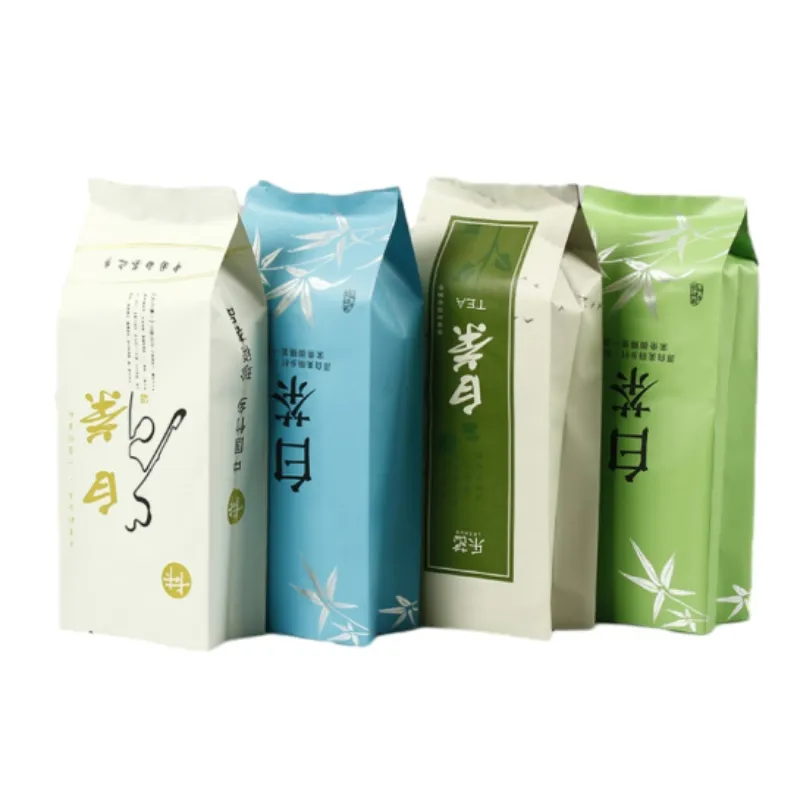
- Material Engineering: Tailoring the composite packaging structure to meet specific barrier needs (e.g., ultra-high barrier for cannabis products, retort-safe films for ready meals, breathable films for fresh produce). This involves selecting the right combination of PET, nylon, aluminum, EVOH, and PE layers.
- Size and Form Factor: Precision engineering of dimensions to perfectly fit your product volume and weight, while optimizing for retail shelf space and shipping efficiency. This includes custom gusset sizes for specific stability requirements.
- Graphic Design & Printing: From vibrant full-color printing using up to 10-color gravure or flexographic techniques to matte or gloss finishes, spot UV, and metallic inks, the visual customization options are endless. This ensures your brand identity truly pops off the shelf.
- Added Features: Integrating specific functional elements like various zipper types (press-to-close, slider), tear notches for easy opening, degassing valves for coffee, handles for larger bags, and clear windows for product visibility.
- Sustainability Integration: Developing solutions with reduced material usage, incorporating post-consumer recycled (PCR) content, or designing for recyclability (e.g., mono-material PE/PE structures).
Our team works closely with clients from concept to delivery, offering expert consultation on material science, design optimization, and regulatory compliance. This collaborative approach ensures that the final 8 Side Seal Bag not only looks exceptional but also performs flawlessly throughout its lifecycle, protecting your product and enhancing your brand's market presence.
Application Cases and Industry Advantages
The versatility of the 8 Side Seal Bag makes it an ideal choice across a broad spectrum of industries, providing distinct advantages in each sector:
Pet Food Industry
For premium pet foods (dry kibble, treats), the 8 Side Seal Bag is a game-changer. Its stable, flat bottom allows for large-volume packaging (up to 20kg), while robust barrier properties protect against oxygen and moisture, preserving freshness and nutritional value. The large printable area offers ample space for attractive graphics and nutritional information, appealing directly to pet owners. The strong side seals prevent bursts, crucial for heavy products. Many brands also opt for reclosable zippers to maintain freshness after opening.
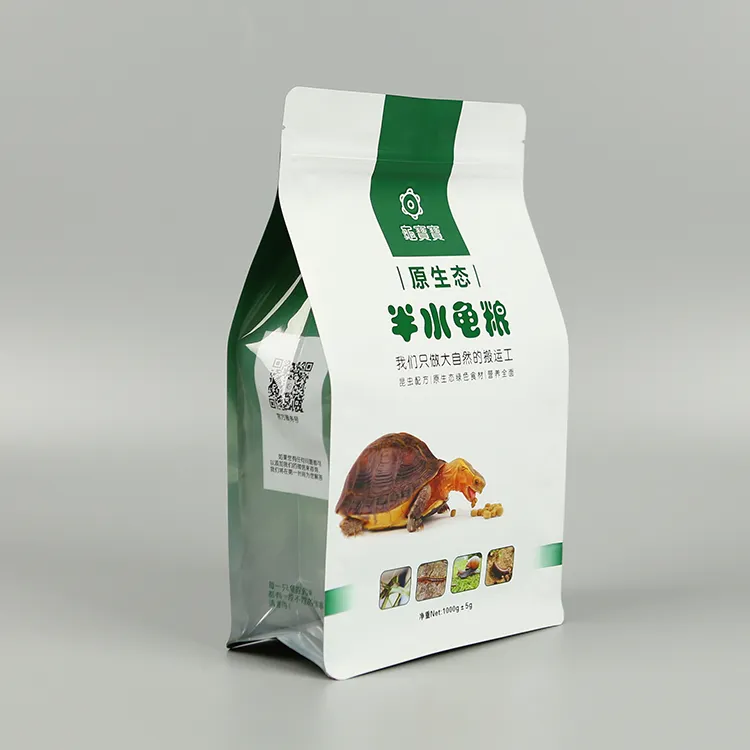
Coffee & Tea Industry
Coffee and tea products demand high-barrier packaging to preserve aroma, flavor, and freshness. The 8 Side Seal Bag, often equipped with a one-way degassing valve, is perfect. The valve allows freshly roasted coffee beans to release CO2 without letting oxygen in, preventing bag puffing and staling. The block bottom provides an elegant, premium presentation that stands out in gourmet coffee aisles. The ample surface area allows for intricate branding, showcasing the origin and quality of the beans.
Snacks & Confectionery
From chips and nuts to cookies and candies, the 8 Side Seal Bag offers excellent crispness retention and extended shelf life due to its superior moisture and oxygen barrier. Its sturdy structure minimizes product breakage. The large display area is ideal for eye-catching graphics that entice impulse buys, and reclosable zippers ensure freshness for multi-serving packs.
Nutraceuticals & Health Supplements
Powdered supplements, protein mixes, and vitamins require packaging that protects against degradation from light, moisture, and oxygen. The 8 Side Seal Bag, with its high-barrier composite packaging, ensures product efficacy and longevity. The stable base makes it easy for consumers to scoop out contents, and the premium look aligns with the health-conscious market.
Other Key Applications:
- Frozen Foods: Excellent barrier properties against freezer burn and condensation.
- Grains & Cereals: Protects against moisture and pests, maintains freshness.
- Detergents & Household Goods: Durability, chemical resistance, and large fill volumes.

In all these scenarios, the 8 Side Seal Bag delivers on its promise of superior product protection, enhanced brand visibility, and consumer convenience, making it a preferred choice for leading brands globally.
Building Trust: Certifications, Warranty & Support
At Junlan Pack, our commitment to quality and customer satisfaction is paramount. We understand that trustworthiness is built on consistent performance, reliable service, and transparent operations. Our adherence to stringent industry standards and a robust customer support framework underscore our dedication.
Authoritativeness & Certifications
Our manufacturing processes and products meet and exceed global benchmarks. Key certifications and practices that demonstrate our authority in the flexible packaging industry include:
ISO 9001:2015 Certified
Ensures a robust Quality Management System (QMS) in place, covering all aspects from design to production and delivery, guaranteeing consistent product quality and customer satisfaction.
FDA & EU Food Contact Compliance
Our food-grade composite packaging materials comply with the strictest regulations for direct food contact, ensuring the safety and purity of your products.
BRCGS Global Standard for Packaging Materials
A globally recognized food safety standard, demonstrating our capability to produce hygienic and safe packaging for food and other sensitive products.
Advanced R&D Capabilities
Continuous investment in research and development to innovate material structures, printing technologies, and sustainable solutions, positioning us at the forefront of the industry.
Years of Industry Experience
With over a decade in the flexible packaging sector, we have accumulated extensive experience serving a diverse global client base, handling complex custom projects with precision.
These certifications are not just badges; they represent our unwavering commitment to producing high-quality, safe, and reliable 8 Side Seal Bags and other flexible packaging solutions.
Delivery Cycle & Order Process
Our streamlined order process ensures efficient delivery:
- Consultation & Quoting (2-3 days): Initial discussion of requirements, material selection, design, and detailed quotation.
- Artwork & Pre-press (5-7 days): Finalizing design, preparing printing plates/cylinders. Client approval is crucial here.
- Production (15-25 days): Printing, lamination, slitting, and pouch forming. This varies based on order volume and complexity.
- Quality Control & Packaging (2-3 days): Rigorous inspection and preparation for shipment.
- Shipping (Variable): Depending on destination and chosen logistics method (air/sea freight).
We provide transparent timelines and keep clients informed at every stage, ensuring predictability and reliability.
Quality Assurance & Warranty Commitment
Every 8 Side Seal Bag leaving our facility undergoes rigorous quality control. We offer a comprehensive warranty covering manufacturing defects and material integrity. Should any quality issue arise that is attributable to our production process, we are committed to prompt resolution, including replacement or credit, in accordance with our terms and conditions. Our aim is to forge long-term partnerships built on trust and mutual success.
Dedicated Customer Support
Our dedicated customer support team is available to assist you throughout your packaging journey. From initial inquiries and technical consultations to post-delivery support, we ensure your questions are answered and your concerns addressed promptly and professionally. Our technical experts can provide guidance on everything from optimal material selection for barrier properties to filling line compatibility.
Professional FAQ: Deep Dive into 8 Side Seal Bag Technology
Q1: What is the primary difference between an 8 Side Seal Bag and a standard stand-up pouch?
A1: The primary difference lies in the bottom and side structures. A standard stand-up pouch has a Doypack-style round or K-seal bottom that allows it to stand, usually with only three printable panels (front, back, bottom). An 8 Side Seal Bag (flat-bottom pouch) features a true flat bottom with reinforced corner seals and side gussets, creating a box-like shape. This design provides superior stability, allows for larger fill volumes, and offers five printable panels (front, back, bottom, and two side gussets) for enhanced branding.
Q2: How are barrier properties in composite packaging measured and why are they crucial?
A2: Barrier properties are measured using specialized tests. Oxygen Transmission Rate (OTR) is measured in cm³/m²/day (e.g., using ASTM D3985) and Water Vapor Transmission Rate (WVTR) in g/m²/day (e.g., using ASTM F1249). These indicate how much oxygen or water vapor can pass through the packaging material over a specific time. They are crucial because oxygen can cause oxidation (e.g., rancidity in fats), and moisture can lead to spoilage, clumping, or loss of crispness. Effective barriers extend product shelf life and preserve quality.
Q3: Can 8 Side Seal Bags be made from sustainable materials?
A3: Yes, the industry is increasingly focused on sustainability. 8 Side Seal Bags can be designed using mono-material structures (e.g., all PE or all PP laminates) to enhance recyclability where recycling streams exist. Additionally, options with post-consumer recycled (PCR) content are available, and research into compostable or biodegradable films is ongoing, offering more eco-friendly composite packaging examples.
Q4: What is the significance of a degassing valve in a coffee 8 Side Seal Bag?
A4: Freshly roasted coffee beans naturally emit carbon dioxide (degas). A one-way degassing valve allows this CO2 to escape from the bag, preventing the bag from puffing up and bursting. Crucially, it prevents outside oxygen from entering the bag, which would quickly degrade the coffee's flavor and aroma. This valve is essential for maintaining coffee freshness and integrity over time.
Q5: What printing technologies are typically used for 8 Side Seal Bags and what are their pros/cons?
A5:
Gravure Printing: Uses etched cylinders, ideal for long runs and achieving extremely high-quality, vibrant, and consistent graphics with fine details. Excellent for premium brands. Higher initial plate cost.
Flexographic Printing: Uses flexible relief plates, more cost-effective for shorter to medium runs, and offers good quality with faster setup times. Versatile for various substrates.
Digital Printing: Best for very short runs, prototypes, and personalized packaging. Offers quick turnaround and no plate costs, but typically higher per-unit cost for large volumes.
The choice depends on print volume, budget, and desired graphic complexity.
Q6: How does the 8 Side Seal Bag contribute to logistics efficiency?
A6: Its flexible nature and lightweight construction significantly reduce freight costs and carbon footprint compared to rigid packaging. When empty, they can be shipped flat, optimizing space. When filled, their stable, box-like shape allows for efficient palletization and stacking, minimizing wasted space in transit and warehouses. This translates directly to lower operational expenses and a more sustainable supply chain.
Q7: What are common quality control checks for 8 Side Seal Bags during manufacturing?
A7: Beyond visual inspection for print defects, critical tests include: Seal Strength Testing (ASTM F88) to ensure integrity of all eight seals; Burst Testing (ASTM F1140 or F2054) to simulate real-world stress; Puncture Resistance (ASTM F1306) for durability; OTR & WVTR testing to confirm barrier performance; and Laminate Bond Strength to ensure layers don't delaminate. These tests guarantee the bag performs as intended throughout its lifecycle.
Conclusion: The Future is Flexible, Stable, and Branded
The 8 Side Seal Bag stands as a testament to the innovation within the flexible packaging industry. Its distinctive design offers a powerful blend of aesthetic appeal, functional superiority, and logistical efficiency. From its stable shelf presence and maximized branding opportunities to its advanced barrier protection through sophisticated composite packaging, this bag empowers brands to deliver their products with optimal freshness and striking visual impact.
As consumer preferences continue to shift towards convenience, sustainability, and premiumization, the 8 Side Seal Bag is poised to remain a leading choice for a wide array of products across diverse industries. Partnering with an experienced and certified manufacturer like Junlan Pack ensures that your packaging not only meets the highest standards of quality and performance but also aligns with your brand's unique vision and market demands. Embrace the future of packaging with the strength and versatility of the 8 Side Seal Bag.
References & Further Reading:
"Flexible Packaging Market Size, Share & Trends Analysis Report By Material (Plastics, Paper, Foils, Bioplastics), By Application, By Region, And Segment Forecasts, 2023 - 2030." Grand View Research. Available at: https://www.grandviewresearch.com/industry-analysis/flexible-packaging-market
"Packaging Trends: 2024 Innovations and Beyond." PMMI Business Intelligence. Available at: https://www.pmmi.org/packaging-trends
"The Future of Flexible Packaging: Drivers for Growth and Innovation." McKinsey & Company. (While a specific direct link to a public article might vary, searching for "McKinsey flexible packaging report" would yield relevant insights). Example search: https://www.mckinsey.com/industries/paper-forest-products-and-packaging/our-insights/flexible-packaging-market-trends-and-forecast
"ASTM International Standards for Packaging." For specific standards like ASTM D3985, F1249, F88. Available at: https://www.astm.org/standards/packaging-standards.html